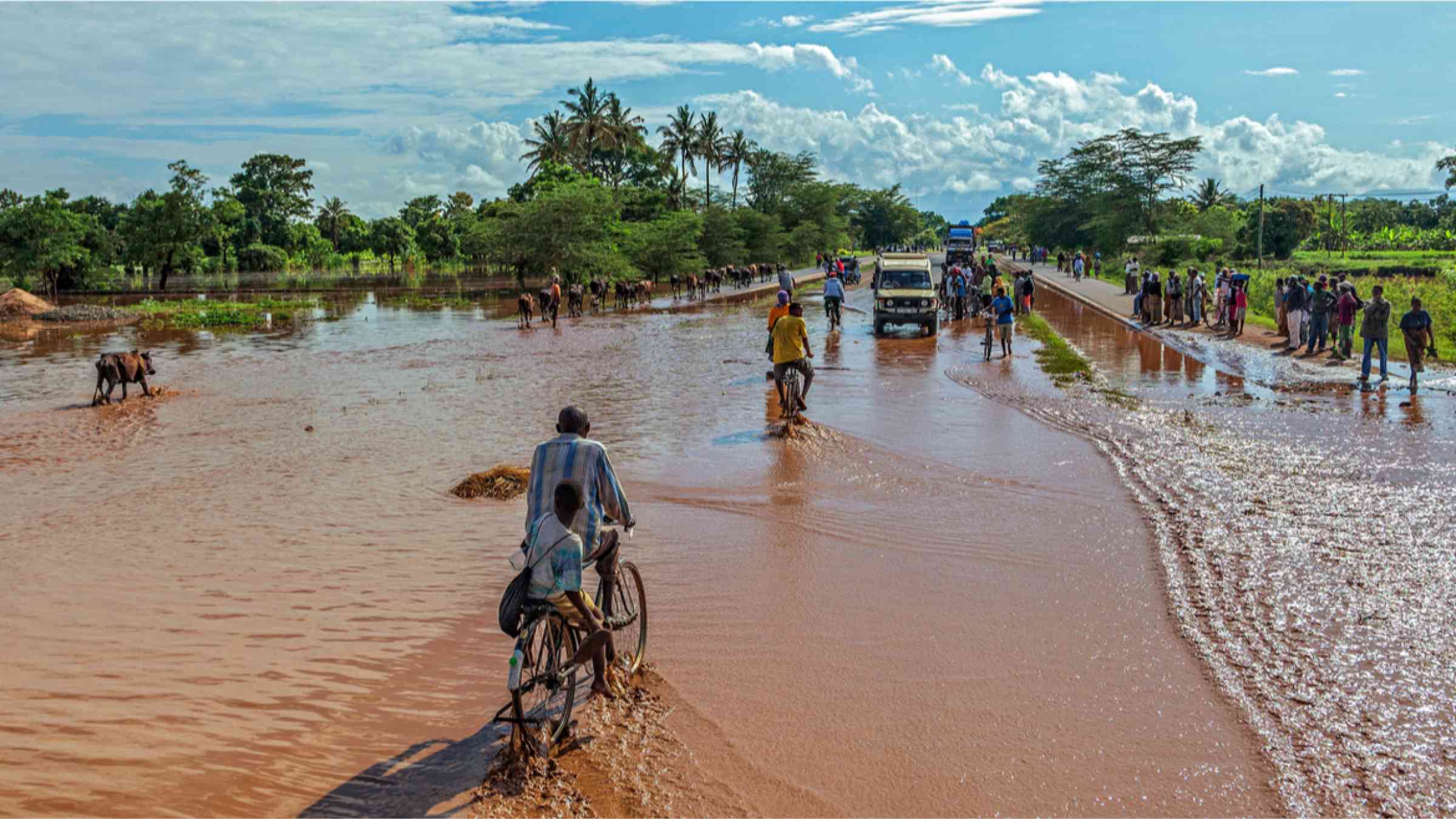Flood warnings shared via SMS and chalkboards in Dar es Salaam

Festo Francis Mgina navigates challenges posed by heavy rainfall in Dar es Salaam, Tanzania. Leveraging the DARAJA project's SMS alerts and community boards, residents can adapt to weather-related risks, fostering resilience and enhancing economic development. This story is part of a series celebrating the locally-led solutions supported by the UNDP implemented - Adaptation Fund Climate Innovation Accelerator programme.
Festo Francis Mgina uses a motorcycle to make deliveries around Karakata informal settlement in Dar es Salaam, Tanzania.
But when it rains heavily, crossing the nearby Msimbazi river becomes a real hazard. Mgcina once damaged his employer’s motorcycle in a serious accident near the flooded waters. Despite attempting to repair the bike at great personal cost, he lost his job.
“If that day I could have known that it rained in some places to the extent of the Msimbazi river to get full, I would have had an opportunity to not cross the river,” says Mgina.
Thankfully, he is back in business again, and he now uses SMS weather forecasts to plan his routes so that he avoids flooded areas.
“I can not deny that it is important to follow weather information,” he says.
At a Karakata school, children read the expected rainfall, temperatures and weather conditions on a community chalkboard.
These SMS’s and community notice boards are simple, low-tech ways to make complex scientific information accessible to communities vulnerable to climate change effects like flooding, says Mussa Raido.
As part of the DARAJA (Developing Risk Awareness through Joint Action) project, Raido’s team has been working with communities in Karakata and Mji Mpya, including teachers and students, to understand and share critical weather information with each other, on time.
"The uniqueness of the project is that we have the pilot project of the school to reach the community,” he says. They trained teachers and student leaders, with the assistance of the Tanzania Meteorological Authority, on key issues around weather and climate change.
DARAJA also put together a disaster committee within the broader community, which simplifies weather information received from the TMA. They then send out this information as SMS messages to a group of 30 community members who are well-connected to distribute it for wide coverage.
To reach even more people, they’ve strategically placed weather information boards in high-traffic areas like markets and near riverbanks.
Raido says they already have reports of people taking proactive measures in response to the forecasts, like moving their belongings to higher ground when heavy rains are predicted.
Parents have shared how they kept their children safe by acting on early warnings received from their kids, and teachers have taken steps to secure school property during adverse weather conditions.
Acheni Athuman Chamguhi, a 49-year old Karakata resident, depends on the weather predictions to plan for her business. She dries the materials she needs to make and sell her beautifully hand-crafted batik fabrics.
“I can really assure you that this information (weather) is very helpful to the community,” says Chamguhi. “Our sales have now increased; the profit has doubled, and within three months! All this is because we conduct our business according to the forecasted weather by the TMA.”
Raido says the TMA historically had trouble reaching these underserved communities. "The community was not satisfied with the way Tanzania Meteorological Authority used to deliver the information in a massive coverage of the city, without specifying different settlements, but also using too technical language," he says.
Working with the DARAJA team, TMA took steps to ensure their information was not only accessible, but also easy to understand, by the people who need it most.
Despite these successes in Karakata and Mji Mpya informal settlements, says Raido, scaling up the project remains a complex challenge. It requires understanding the unique needs of each community and fostering a strong partnership between local authorities, community leaders and weather agencies.
"One challenge of doing a project like this in an informal settlement where it is very congested, is that the people do not understand the importance of this kind of information. You really have to engage the community from the grassroots level," says Raido.
"So how can you make them feel like this is a priority? You need to have those daily conversations; daily personalisation."
His team achieved this tough feat using funding from the Adaptation Fund and European Union, which supports climate innovation in developing countries through its UNDP-Adaptation Fund Climate Innovation Accelerator (AFCIA) programme.